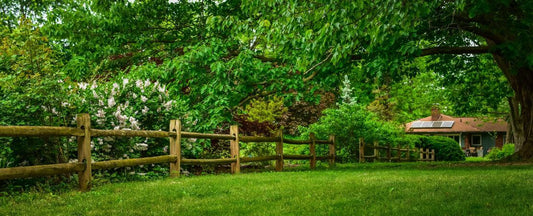Fertilizer Facts and Tips

The Purpose of Fertilizing Your Garden Is Replacing Soil Nutrients or Amending Deficient Soil
In nature, organic material falls to the ground and is reincorporated within the soil. An area rich with life constantly replenishes itself. In domestic situations, the soil is cleaned of debris and any interfering organisms that might be future food for plants. Even pruning and removing fallen leaves and fruit removes potential food. Harvesting and cleaning plant debris in your garden removes a possible source of nutrients– when left, your plants could be self-sufficient, maintaining a constant size and humble blooms and fruit. However, humanity did not master agricultural practices millennia ago just to let the plants do all of the work. The essence of technology is manipulating one’s environment. We can prune and keep our garden free of debris and still amend the soil to get better than average returns for our labors.
While we do this, we must remember that there are other aspects of soil care that also affect plant performance. Temperature, aeration, moisture, and acidity are also very important. You could have the best grasp of fertilization, and still have poor performance because you missed another key element. Here I just intend to talk about fertilization.
Fertilizer Ingredients
In most situations, unless your plant has a specific trace element deficiency, Nitrogen (N), Phosphorous (P), and Potassium (K) will be your major concerns when considering fertilization. Trace elements, such as iron, boron, chlorine, manganese, copper, and zinc will play an important role, but too much of them will be dangerous for your plant. Carbon, hydrogen, and oxygen are also very important, but the plant takes these elements from the air and water, not from the soil.
When you initially plant your garden, include generous amounts of organic matter (manure, mulch compost) into soil. This will provide a good balanced base of those essential ingredients for your brand new plant, primed to receive your fertilization regimen for the rest of the season.
Nitrogen (N)
N is the most abundant element in the atmosphere, but is inaccessible to plants in it natural gaseous state. Bacteria in the soil and lightning from storms fix nitrogen into chemicals like urea that make it useful for plants. N is most important for green growth. Later in the season, when your plants should be entering dormancy, green growth is unwanted, and nitrogen intake should be reduced. Also, too much nitrogen will prevent blooms from developing. N is water soluble and moves through the soil very quickly, it must be replaced more often than the other elements unless you are using a slow-release fertilizer.
Phosphorous (P)
P promotes root growth, fruit ripening and seed development, and it is especially important for very young plants and right before plants go into dormancy for winter. Phosphorous naturally occurs in composting organic matter in the soil.
Potassium (K)
K or potash is important for development of fruit and leaves, and it is responsible for the overall health of the plant. If there is a deficiency in potassium, there will be poor growth, bland fruit, and even whole branch death.
Types of Fertilizer
The most popular type with most home gardeners is the All-purpose water soluble fertilizer which has NPK in roughly equal amounts. These are simple fertilizers to use, you just follow the mixing and usage instructions on the packaging and the fertilizer should do its job. For example Algoflash mineral-based fertilizer is an all-purpose water soluble fertilizer, and it is very simple to use. It is perfect for small gardens or container plants and you just mix one cap-full per gallon of solution and water your plants with it once a week to feed your plants. Algoflash also includes those trace elements in the proper amounts so that you don’t miss anything, it is very easy.
All-purpose slow-release fertilizer is a simple, low maintenance fertilizer that is perfect for big gardens, trees, and shrubs. If you incorporate the slow-release fertilizer into your soil at the beginning of the season, it will release those vital elements into your soil for the rest of the season.
Superphosphate is a fertilizer than either be used to treat a phosphorous deficiency or to stimulate root growth. In the fall, when your plants are ready to go dormant, you don’t want to use a fertilizer with any nitrogen which would create new growth and draw the plants energy away from important root growth and the physiological changes necessary for winter dormancy. It is also good for young plants to ensure a healthy roots system. Too much at the wrong time could be dangerous for the plant’s foliage.
Organic fertilizers are another alternative. You can get the results of an all-purpose fertilizer by using various organic sources in combination. A mixture of blood, fish, and bone meal makes a complete fertilizer with equal near amounts of N, P, and K. These types of fertilizers may be harder to acquire and could be more expensive. A strong compost may be just as adequate, but make sure that your compost has broken down into a loose black soil. Compost that hasn’t broken down enough will not be a very effective fertilizer.


